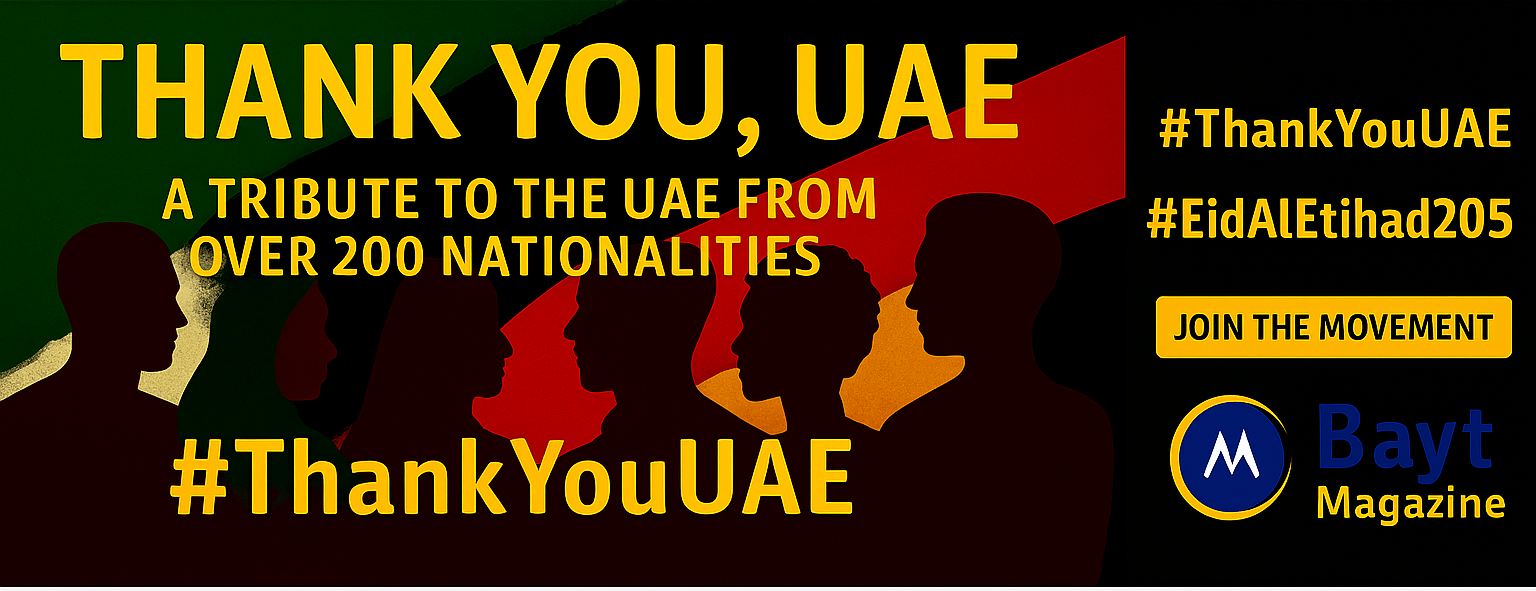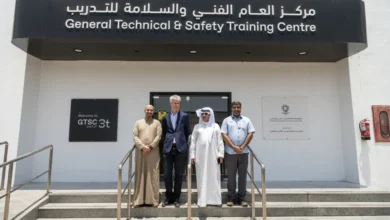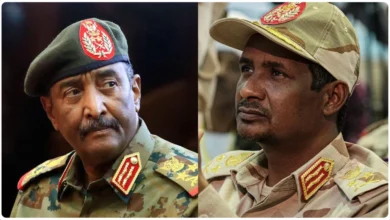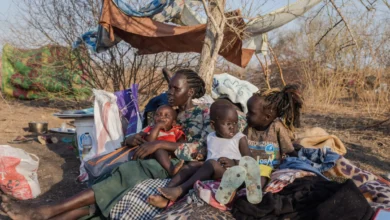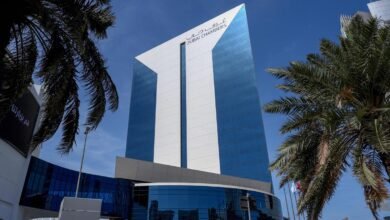
Report: Arab World Hits Record 348M Internet Users in 2024
The digital world of Arab nations has changed dramatically. Internet users have reached 348 million, which represents 70.2% of the region’s 496 million people. The gap between Arab countries and the European Union has shrunk to just 71 million users.
Social media platforms of all types have attracted 228 million users in the region, and 46% of the population now uses these services regularly. Young people drive this digital shift, as those under 35 make up 62.8% of the population. Saudi Arabia and UAE lead this change with 99.0% of their people connected to the internet, which shows how quickly these nations have embraced digital technology.
Arab Internet Users Reach 348 Million, Surpassing Key Milestone

Image Source: IEMed
Arab internet users have hit a record 348 million, based on a detailed study by Galal & Karawi Management Consulting through collaboration with Orient Planet Research. This number marks a big step forward in the region’s digital evolution.
70.2% of Arab population now online
The Arab world has reached a 70.2% internet penetration rate among its 496 million residents. These numbers match the International Telecommunication Union’s (ITU) data that shows about two-thirds (69%) of Arab States’ population uses the internet.
Internet adoption looks different across the region. Gulf countries like the United Arab Emirates, Bahrain, Kuwait, Qatar, and Saudi Arabia have almost everyone online with 99-100% internet penetration. Jordan (93%), Morocco (91%), and Libya (89%) show strong digital growth.
Lebanon (84%), Iraq (82%), Algeria (77%), and Egypt (73%) continue to connect more people. Egypt stands out as one of the biggest untapped markets with 31 million people still without internet access.
Internet quality varies widely across these countries. UAE users enjoy mobile internet speeds of 139.41 Mbps and fixed internet connections of 186.76 Mbps. These speeds enable advanced digital services.
Social media adoption hits 228 million users
Social media use in the Arab world has grown to 228 million users—46% of the total population. This growth matches the wider trend of increased digital activity across the Middle East and North Africa.
The region shows unique social media patterns. Five MENA countries rank among the global top 10 for social network use. The UAE leads with over 100% (showing multiple accounts per user), followed by Bahrain (98.7%) and Qatar (96.3%).
Arab users love platform variety. UAE’s internet users average 8.2 platforms monthly, Saudi Arabia’s 7.9, and Egypt’s 7.2. Each country has its favorites—Facebook remains strong in Egypt, ranking as its 10th biggest market with 42 million users. WhatsApp rules in the UAE, where 80% of people use it.
Snapchat has gained 75 million unique users across the Middle East and grows 33% yearly. Libya tops the world in Snapchat use at 96.1%, with the UAE fourth at 88.9% reach.
MENA’s digital ad market shows this growth clearly. It’s worth $16.16 billion yearly and should reach $29.01 billion by 2024. These numbers highlight the region’s expanding digital economy.
Digital change goes beyond personal messages—68% of MENA consumers get their news from social media first, and over 90% read news on mobile devices. UAE leads Saudi Arabia and Egypt in choosing social media over TV and news websites.
Arab Youth Drive Digital Expansion Across the Region

Image Source: Arabian Business
The Arab world’s digital explosion stems from its unique demographic makeup. Young people under 35 make up an astounding 62.8% of the population. This youth-heavy population gives Arab countries a clear edge in digital advancement [21, 22].
62.8% of population under 35 accelerates online involvement
Young people are reshaping how the internet works in Arab nations. Eng. Asem Galal, Co-founder of Galal & Karawi Management Consulting, points out that digital platforms are now essential for governments to reach younger people, especially Millennials and Gen Z.
Internet usage among 15-24 year olds in Arab States reaches 78% – a full 12 points above the rest of the population’s 66%. This group, known as the “Arab Digital Generation” (ADG), includes internet users aged 15 to 35 who actively use digital devices, go online several times daily, and run at least one social media account.
Young internet users show unique online habits. They spend roughly 3.5 hours daily on social media. These users now reject global content simply repackaged for their region. They want content that directly speaks to their lives, experiences, and viewpoints.
Dr. Abou Zaki sees the region’s unique advantage: “The combination of rapid population growth and increasing digital dependence turns the region into fertile ground for innovation. Brands now have fresh opportunities to adapt their strategies to young market needs”.
Youth-centric platforms shape usage patterns
Arab youth’s platform choices show interesting regional differences:
- Gulf states favor technology, engineering, and culinary arts content (10% each), while 17% of North African youth aim to become social media influencers
- Saudi Arabia leads worldwide YouTube usage, with 68% of users watching more video online than on TV
- MENA region claims the top five countries by TikTok reach: UAE, Saudi Arabia, Kuwait, Qatar, and Iraq
- Saudi Arabia, Iraq, and Egypt rank among Snapchat’s top 15 largest national markets
Social media now serves as Arab youth’s main news source. About 61% use these platforms for information, compared to 34% who read news online and just 9% who read newspapers. This marks a notable drop from 2019, when almost 80% of young Arabs got their news from social channels.
Nine in ten young Arabs use social media daily. Each country shows different media habits. Egyptian millennials, for example, watch YouTube daily at a rate of 77%. MENA millennials post content and share how-to videos twice as often as their global peers.
Young entrepreneurs find substantial opportunities in the digital economy. Success stories include Ronaldo Mouchawar, Souq.com’s co-founder, and Samih Toukan, who started Maktoob.com – both in their early thirties. In spite of that, uneven digital access might worsen existing gaps between connected urban areas and educated youth.
Arab youth utilize digital skills to advance economically. Platforms like Upwork connect skilled young people with global opportunities. Sharing economy platforms such as Careem help unskilled youth earn money. The Middle East and North Africa currently show some of the world’s highest youth unemployment rates. This highlights why channeling young people’s digital skills into vocational training and quality education matters so much.
Platform Preferences Reveal Regional Digital Cultures

Image Source: ResearchGate
Social media usage across the Arab world shows unique regional digital cultures that mirror local interests, demographic shifts, and how people adopt new technology. The data reveals clear geographical priorities that show how these digital platforms connect Arabic-speaking communities.
TikTok dominates Gulf and Levant regions
TikTok has become the undisputed leader throughout the Gulf Cooperation Council (GCC) states. The UAE tops the global charts with an impressive 105.2% reach. Saudi Arabia follows at 103.3%, Kuwait at 98.8%, Qatar at 96.5%, and Iraq at 94.5%. These numbers go beyond 100% because many users create multiple accounts.
UAE’s TikTok users spent 7.63 billion hours on the platform in 2024, which marks a 10% growth from last year. The platform’s reach goes beyond the Gulf into Iraq, Lebanon, Sudan, Mauritania, Yemen, and Somalia.
TikTok’s growth in the region has exploded. Top GCC influencers have doubled their followers in just one year. Their total follower count jumped from 24.6 million to 54.6 million—a 120% increase. Oman and Qatar saw remarkable growth, with their top influencers’ followers increasing by 674% and 658% respectively.
Facebook leads in North Africa
While TikTok rules the Gulf, Facebook dominates North Africa. The region has about 103.9 million Facebook users, making it Facebook’s biggest market in Africa.
Facebook remains the go-to platform in Algeria, Morocco, Tunisia, and Libya (except Egypt), along with Palestine and Comoros. Libya has the world’s highest Facebook penetration at 100%. The UAE follows at 93% and Qatar at 90%.
Egypt ranks as Facebook’s ninth-biggest market globally with 44 million users. This makes it a major center of Facebook activity in the region. These numbers match broader trends where Facebook keeps growing in Egypt, Morocco, and Algeria.
YouTube and Snapchat show strong niche appeal
YouTube has found its place in the region, especially in Egypt, Jordan, and Oman. Egypt’s YouTube engagement is particularly strong, with 70% of internet users watching it daily.
The UAE leads global YouTube penetration at 94.2%, with Israel close behind at 93.6% and Saudi Arabia at 89.7%. YouTube reached 8.99 million UAE users in early 2023, which equals 94.8% of the country’s population.
Snapchat has developed a strong following, especially in the Gulf. The platform now reaches 67 million unique monthly users across the region—38% more than last year. Saudi Arabia’s 24.7 million Snapchat users make it crucial for the platform’s success.
Six MENA countries rank among the top ten globally for Snapchat reach: Saudi Arabia (76.5%), Bahrain (73.5%), Kuwait (61.1%), Iraq (55.4%), UAE (51.8%), and Oman (51.2%). These numbers show how different platforms have created their own regional strongholds across the Arab digital world.
Arab World Narrows Digital Gap with European Union

Image Source: Arab Barometer
Recent studies show the digital gap between the Arab world and European Union is closing fast. Internet adoption across the Arab region has grown rapidly. This growth has created new ways for both regions to work together and develop their digital capabilities.
Internet user gap with EU shrinks to 71 million
The Arab world now has about 348 million internet users, while the European Union has 419 million users. The difference between these regions is just 71 million users. Arab states have seen massive growth in internet usage. The numbers jumped from 8.6% of people in 2005 to 69% in 2023.
Internet growth in the region has been strong but not equal everywhere. A clear divide exists between cities and rural areas:
- 82% of urban populations in Arab states use the internet
- Only 51% of rural residents have internet access
The gender gap in internet usage has improved but still exists. The difference dropped from 14 percentage points in 2019 to 10 percentage points in 2023. Today, 64% of women use the internet compared to 74% of men.
Social media usage nearly on par with EU figures
Social media numbers between the regions are almost identical. The EU has around 230 million social media users, and the Arab world follows close behind with 228 million users[151]. These numbers show how quickly the Arab region’s presence has grown on global platforms.
Digital changes give both the EU and MENA region many chances to work together. Europe can benefit by helping digital development in its Southern Neighborhood. They can access needed talent in Information and Communications Technology and support economic stability that could reduce irregular migration.
The COVID-19 pandemic helped speed up digital connections. However, it also showed existing digital gaps that make inequality worse. MENA governments and European partners need to invest more resources to fix these digital differences for the region to grow inclusively.
Experts Call for Unified Digital Strategy and Local Content

Image Source: Government of Dubai Media Office
Digital experts from the Arab world want better coordination to control the region’s growing online presence. Each nation develops its own digital strategy, but technology specialists believe a unified vision would boost economic benefits. This approach would also protect cultural identity in our increasingly connected digital world.
AI and cultural identity seen as key to participation
A concerning imbalance exists in the digital world – Arabic speakers make up 5.2% of global internet users, yet only 3% of online content appears in Arabic. The digital language gap stems from Arabic’s diverse dialects, complex grammar, and technical challenges in digital formats.
These challenges have led experts to support national digital content development that uses artificial intelligence while preserving the region’s cultural identity. Scientists suggest creating Arab-language databases to train AI systems that understand cultural nuances. This effort would help protect cultural heritage as digital innovation speeds up.
The lack of Arabic content creates major obstacles for businesses. Arab governments have launched billion-dollar e-Government projects to establish the region’s place in the global information society. Local content has become the life-blood of national strategies. These initiatives drive economic diversification by building local workforce skills.
Calls for Arab-wide data regulation like in GDPR
The Middle East’s data privacy landscape has changed substantially. Saudi Arabia, UAE, and Bahrain have passed data protection laws that show their steadfast dedication to consumer rights. GCC data protection laws now affect organizations inside and outside their borders when they handle personal data in these countries.
These regulations draw inspiration from Europe’s GDPR, which stands as the world’s leading privacy law. Saudi Arabia’s data protection law mirrors GDPR in many ways, including data subject rights and privacy notice requirements. However, the response times for subject requests remain unclear.
Note that GDPR fines can reach €20 million or 4% of global turnover. Companies that fail to protect personal data face more than just financial penalties. They risk operational problems and might permanently lose their customers’ trust.
Arab digital transformation shows evidence of quick tech adoption throughout the region. The number of internet users has reached 348 million users, which marks one of the most important achievements. This growth becomes even more notable when we look at the previous digital divide with developed regions. The region’s social platforms have seen explosive growth with 228 million users who now welcome digital communication platforms.
Users under 35 lead tech adoption and without doubt shape the digital world. Regional digital cultures reveal clear platform choices – TikTok rules Gulf states while Facebook stays strong in North Africa. Local values and communication priorities reflect these unique usage patterns.
Arab internet users now trail EU users by just 71 million, which points to remarkable progress. Social media adoption rates match European numbers, though some hurdles exist. Arabic content creation hasn’t kept pace with user growth. Data protection rules keep evolving to match global standards.
Arab digital growth brings both possibilities and challenges. The path to a soaring win requires bridging remaining digital gaps and creating more Arabic content. Strong data protection measures need to be established. These steps will help build the region’s digital future while keeping its cultural identity intact.


